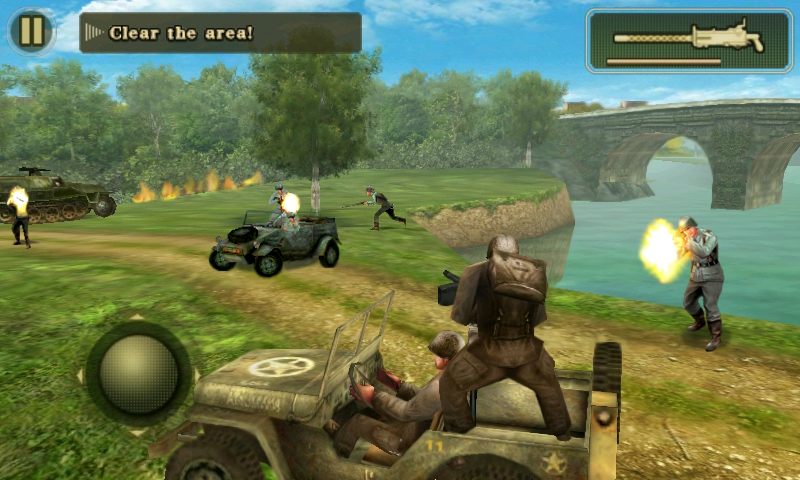
Some of the buttons are just too close to each other, too. That's a lot of real estate taken up by inputs and until you have a full grasp on where everything is, you must take your eyes off the action to find exactly what you need to tap. At one point, I counted ten virtual buttons on-screen: move stick, shoot, sprint, grenade, ironsights, crouch, contextual action, weapon select, pause, and audio toggle. Where Global Front starts to suffer, though, is button fatigue. The virtual stick is still quite good and aiming by dragging a finger across the screen is definitely workable. The basic, default control scheme will be familiar to anybody that's played any of Gameloft's previous shooters, such as NOVA and Modern Combat. (And until you reach these checkpoints, you must often deal with endless streams of enemies that march out of the ether.) I wish Global Front offered options for tackling firefights.

Global Front barks orders at you like you were an infantryman, setting up a rigid set of checkpoints that take any sense of discovery out of the war. A grenade killed me while leaving the two dudes standing next to me on their feet.) There is no exploration whatsoever. But the downside to setting up these scenes is that Global Front is incredibly linear. Even though the World War II setting is old hat, many scenes still offer some fun moments, like looking for the outlines of shooters on the rooftops of a Tunisian city.

Gameloft has done a remarkable job setting up some great set pieces, such as pushing back Axis forces from Italian ruins. No war effort would accommodate such a thing, but it serves as a thread to string together missions that unfold across the different theaters, from Europe to Africa to the Pacific.

His Medal of Honor has been mysteriously revoked and you set out to uncover what happened. You are attempting to find out what actually happened to your brother, a fellow soldier killed in action. Global Front's narrative is completely impractical, but it's still a good yarn.


 0 kommentar(er)
0 kommentar(er)
